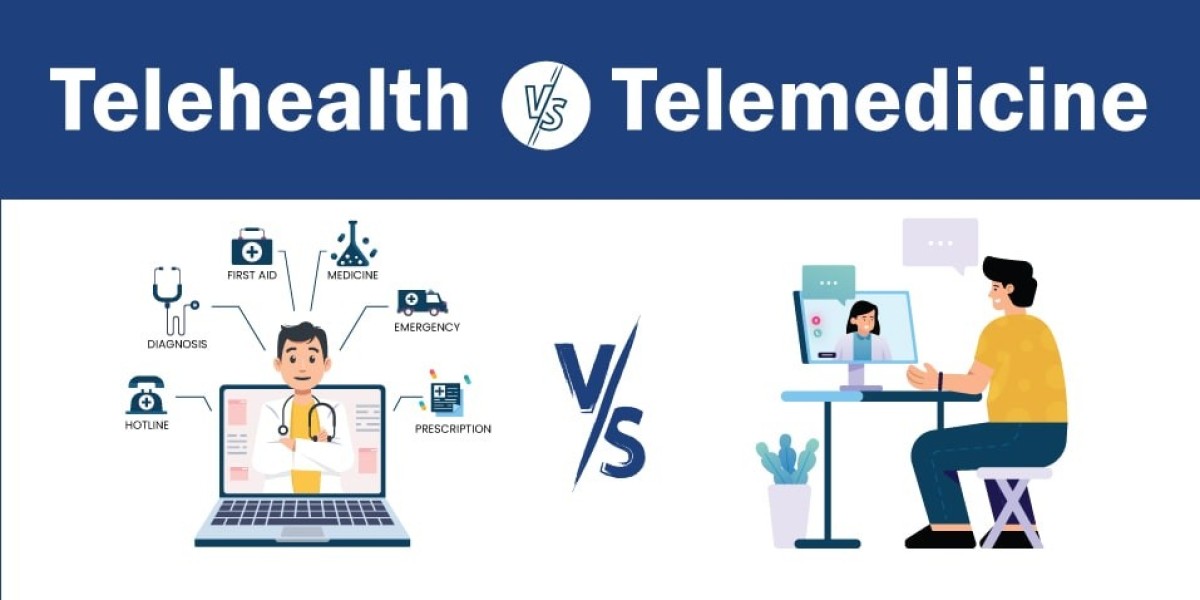In today's rapidly evolving healthcare landscape, telehealth and telemedicine have emerged as transformative forces, revolutionizing the way patients access medical care and interact with healthcare providers. These innovative technologies leverage the power of digital connectivity to deliver healthcare remotely, offering unprecedented convenience, accessibility, and efficiency for patients and providers alike. In this article, we'll explore the evolution of telehealth and telemedicine, their impact on healthcare delivery, and their potential to shape the future of medicine.
The Evolution of Telehealth and Telemedicine
Telehealth and telemedicine have a rich history that dates back several decades, but recent advancements in technology and changes in healthcare delivery models have propelled these concepts into the mainstream. Telehealth encompasses a broad range of healthcare services delivered remotely, including virtual consultations, remote monitoring, and teletherapy, among others. Telemedicine, on the other hand, specifically refers to the practice of medicine using telecommunications technology, often involving diagnosis, treatment, and management of medical conditions from a distance.
Benefits of Telehealth and Telemedicine
The rise of telehealth and telemedicine has brought about a myriad of benefits for patients, providers, and healthcare systems:
Improved Access to Care: Telehealth and telemedicine break down geographical barriers, enabling patients to access medical care regardless of their location. Rural and underserved communities, in particular, benefit from increased access to specialists and healthcare services that may not be available locally.
Convenience and Flexibility: Telehealth and telemedicine offer unparalleled convenience for patients, who can attend appointments from the comfort of their own homes using smartphones, tablets, or computers. This flexibility eliminates the need for travel and time off work, making it easier for individuals to prioritize their health.
Cost Savings: Telehealth and telemedicine can reduce healthcare costs for patients and providers alike. By minimizing the need for in-person visits, telehealth reduces transportation expenses and lost wages associated with seeking medical care. For healthcare providers, telemedicine can lower overhead costs and improve efficiency by reducing administrative burdens.
Enhanced Patient Engagement: Telehealth and telemedicine empower patients to take an active role in managing their health. With remote monitoring tools and virtual consultations, patients can track their health metrics, communicate with their care team, and participate in their treatment plans more effectively.
Timely Intervention and Monitoring: Telehealth and telemedicine enable timely intervention and monitoring of patients with chronic conditions or complex medical needs. Remote monitoring devices can track vital signs and health metrics in real-time, alerting healthcare providers to potential issues before they escalate.
Challenges and Opportunities
Despite their many benefits, telehealth and telemedicine still face challenges that must be addressed to realize their full potential:
Regulatory and Reimbursement Barriers: Regulatory and reimbursement policies vary widely across states and countries, creating barriers to widespread adoption of telehealth and telemedicine services. Policymakers must work to establish clear guidelines and reimbursement structures that support telehealth expansion while safeguarding patient safety and privacy.
Digital Divide: The digital divide, which refers to disparities in access to technology and internet connectivity, poses challenges to equitable telehealth access. Efforts to bridge the digital divide through expanded broadband access and digital literacy initiatives are essential to ensure that all patients can benefit from telehealth and telemedicine.
Data Security and Privacy: Telehealth and telemedicine raise concerns about data security and patient privacy. Healthcare organizations must implement robust cybersecurity measures and adhere to strict privacy regulations, such as HIPAA, to protect sensitive patient information transmitted during virtual consultations.
Provider Training and Integration: Healthcare providers require training and support to effectively integrate telehealth and telemedicine into their practice workflows. Education on telehealth best practices, technology training, and support resources are essential to ensure that providers feel confident and competent in delivering remote care.
Quality of Care: Maintaining quality of care in a virtual setting is paramount. Healthcare organizations must develop guidelines and standards for telehealth practice, including protocols for virtual consultations, documentation requirements, and mechanisms for monitoring and ensuring clinical quality.
The Future of Telehealth and Telemedicine
Looking ahead, the future of healthcare undoubtedly lies in the continued integration and expansion of telehealth and telemedicine services. As technology continues to evolve and consumer preferences shift, telehealth and telemedicine will play an increasingly central role in healthcare delivery. Advances in artificial intelligence, remote monitoring, and digital health technologies will further enhance the capabilities of telehealth platforms, enabling more personalized, efficient, and accessible care for patients worldwide.
In conclusion, telehealth and telemedicine represent a paradigm shift in healthcare delivery, offering transformative solutions to longstanding challenges in access, affordability, and quality of care. By leveraging the power of digital connectivity, telehealth and telemedicine have the potential to improve health outcomes, enhance patient experiences, and reshape the future of medicine. As we continue to navigate healthcare's digital frontier, embracing telehealth and telemedicine will be essential to building a more equitable, efficient, and patient-centered healthcare system for all.








